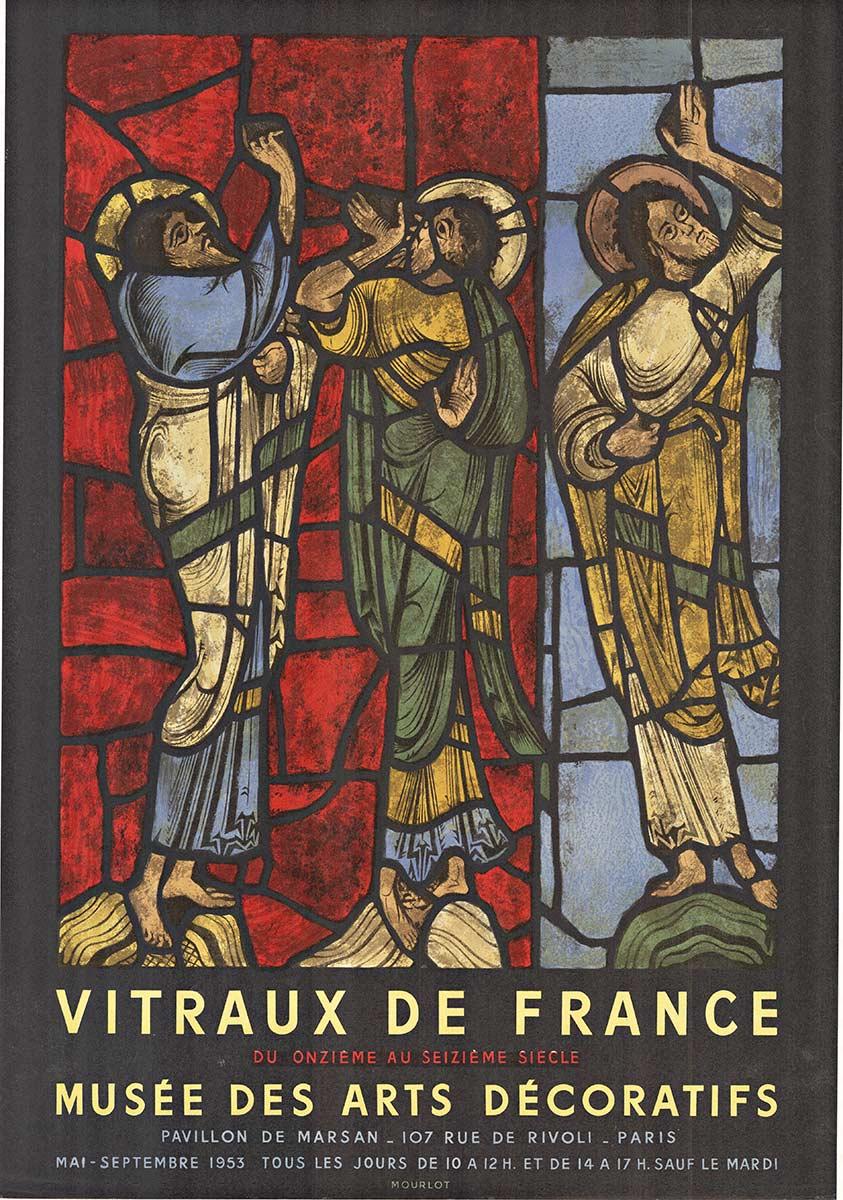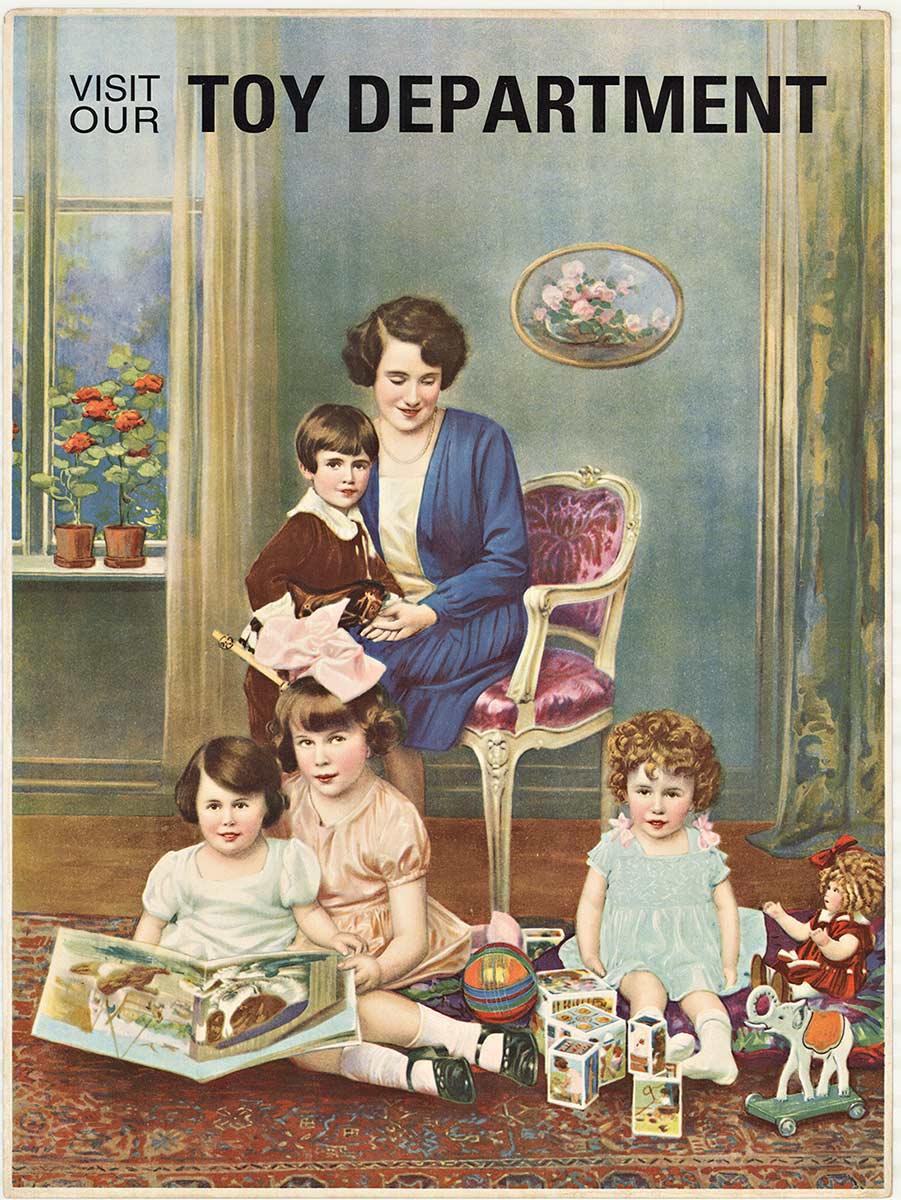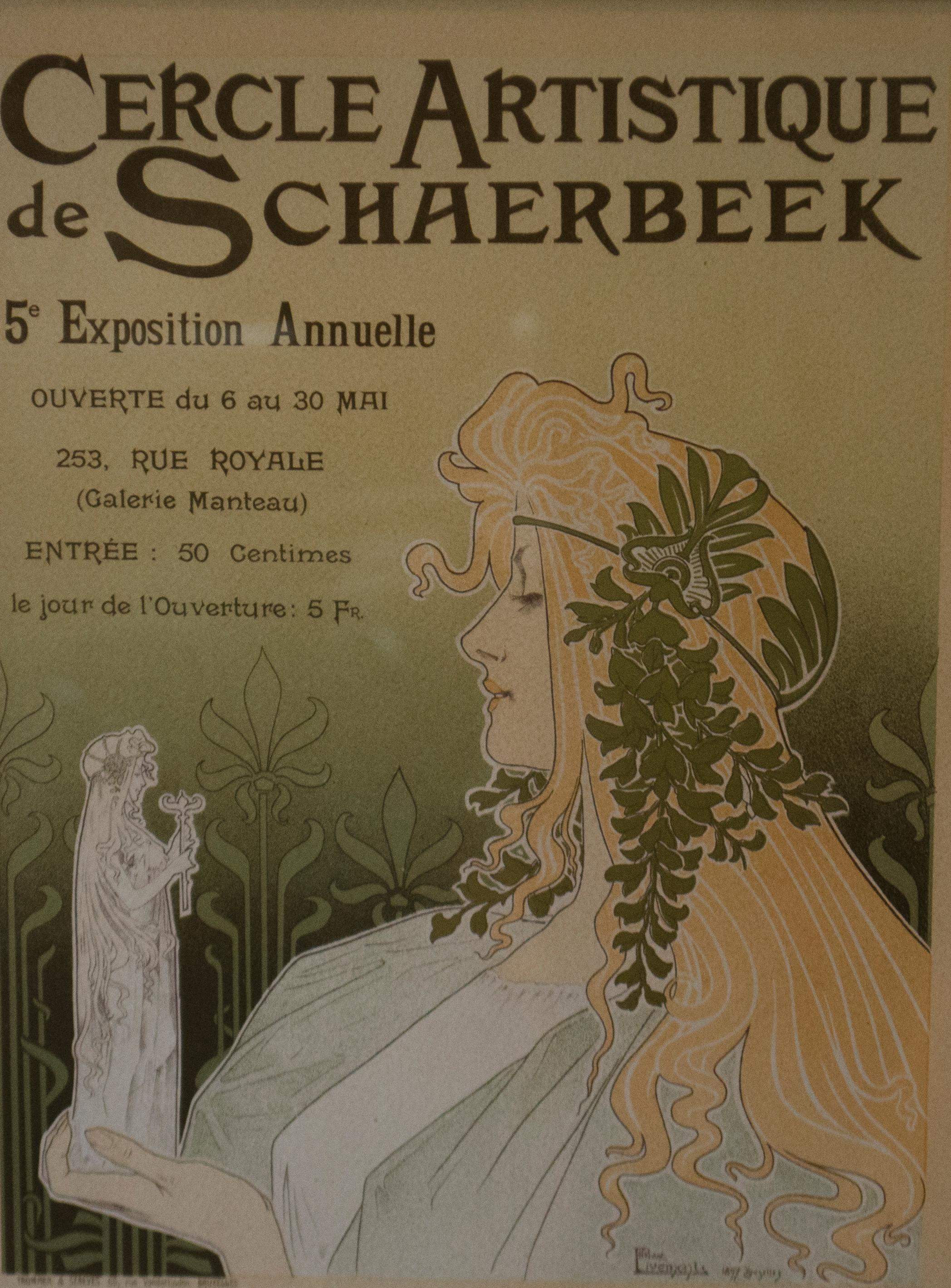Items Similar to La Negresse (The Negress)
Want more images or videos?
Request additional images or videos from the seller
1 of 6
Louis LegrandLa Negresse (The Negress)1909
1909
About the Item
La Negresse (The Negress)
Etching & drypoint, 1909
Unsigned (as issued in the portfolio)
From the album "Les Bars" (8 plates plus cover illustration)
Edition: 30, this state with remarque
Published by Gustav Pellet, Paris
A very rich impression with burr
Reference: Arwas 390 i/III with the remarque
IFF 148 (portfolio)
Exsteens 275 i/III
Louis Auguste Mathieu Legrand (29 September 1863 – 1951) was a French artist, known especially for his aquatint engravings, which were sometimes erotic. He was awarded the Légion d'honneur for his work in 1906.
Life
Legrand was born in the city of Dijon in the east of France. He worked as a bank clerk before deciding to study art part-time at Dijon's Ecole des Beaux-Arts. He won the Devosge prize at the school in 1883.[2] In 1884 Legrand studied engraving under the Belgian printmaker Félicien Rops.
Legrand's artworks include etchings, graphic art and paintings. His paintings featured Parisian social life. Many were of prostitutes, dancers and bar scenes, which featured a sense of eroticism. According to the Hope Gallery, "Louis Legrand is simply one of France's finest early twentieth century masters of etching." His black and white etchings especially provide a sense of decadence; they have been compared to those of Henri de Toulouse-Lautrec, though his drawings of the Moulin Rouge, the can-can dance and the young women of Montmartre preceded Toulouse-Lautrec's paintings of similar scenes. He made over three hundred prints of the night life of Paris. They demonstrate "his remarkable powers of observation and are executed with great skill, delicacy, and an ironic sense of humor that pervades them all."
Two of his satirical artworks caused him to be tried for obscenity. The first, "Prostitution" was a symbolic drawing which depicted a naked girl being grasped by a dark monster which had the face of an old woman and claws on its hands; the second, "Naturalism", showed the French novelist Émile Zola minutely studying the thighs of a woman with a magnifying glass. Defended by his friend the lawyer Eugène Rodrigues-Henriques (1853–1928), he was found not guilty in the lower court, but was convicted in the appeal court and then given a short prison sentence for refusing to pay his fine.
Legrand was made famous by his colour illustrations for Gil Blas magazine's coverage of the can-can, with text by Rodrigues (who wrote under the pseudonym Erastene Ramiro). It was a tremendous success, with the exceptional quantity of 60,000 copies of the magazine being printed and instantly sold out in 1891.
In 1892, at the instigation of the publishing house Dentu, Legrand made a set of etchings of his Gil Blas illustrations. The etchings were published in a book, Le Cours de Danse Fin de Siecle (The End of the Century Dance Classes).
Legrand took a holiday in Brittany, which inspired him to engrave a set of fourteen lithographs of simple country life called Au Cap de la Chevre (On Goat Promontory). It was published by Gustave Pellet who became a close friend of Legrand's. Pellet eventually published a total of 300 etchings by Legrand, who was his first artist; he also published Toulouse-Lautrec and Félicien Rops among others.
He did not only work in graphics; he exhibited paintings at the Paris salon of the Société Nationale des Beaux-Arts starting in 1902. In 1906 he was made a chevalier of the Légion d'honneur.
Legrand died in obscurity in 1951. A retrospective exhibition was held at the Félicien Rops museum in Namur, Belgium in 2006 to celebrate his graphic art. The art collector Victor Arwas published a catalogue raisonné for the occasion.
Books illustrated
de Maupassant, Guy: Cinq Contes Parisiens, 1905.
Poe, Edgar Alan: Quinze Histoires d'Edgar Poe, 1897.
Awards and exhibitions
1896: First solo exhibition, Paris.
1900: Silver Medal, Universal Exhibition, Paris.
1906: Légion d'honneur.
1911: Retrospective exhibition, Palais de Modes, Paris.
2006: Retrospective exhibition, Félicien Rops museum, Namur, Belgium.
Works in collections
Joie Maternelle ("Maternal Joy"), 1900, Yale Medical Historical Library.
Titi. Brooklyn Museum.
See also
Martin van Maële
References
Louis Legrand : catalogue raisonne, Victor Arwas and the Musée Félicien Rops (Namur, Belgium), Papadakis, London, 2006
Arwas, Victor (1978). "Louis Legrand". Armstrong Fine Art. Retrieved 2013-05-10.
"Exhibit Invite #1 (etching)". Hope Gallery. 2007–2013. Retrieved 2013-05-11.
"Louis Legrand (1863-1951)". Fletcher/Copenhaver Fine Art. Retrieved 2013-05-12.
Not, as often reported, in 1902. Louis Legrand: catalogue raisonné, Victor Arwas and the Musée Félicien Rops (Namur, Belgium), Papadakis, London, 2006
Arwas, 2006.
Yale: Medical Historical Library Archived 2011-06-23 at the Wayback Machine
"Brooklyn Museum: European Art: Titi".
Bibliography
Arwas, Victor. Belle Époque: Louis Legrand. New York, 1978.
Arwas, Victor. Louis Legrand: Catalogue Raisonné. Papadakis, 2006.
Kahn, Gustave. Louis Legrand. Special issue of "L'Art et le Beau" magazine, 1908.
Mauclair, Camille. Études sur quelques artistes originaux. Louis Legrand, peintre et graveur. Paris, 1910.
Courtesy Wikipedia
- Creator:Louis Legrand (1863 - 1951, French)
- Creation Year:1909
- Dimensions:Height: 9.88 in (25.1 cm)Width: 5.63 in (14.31 cm)
- Medium:
- Movement & Style:
- Period:
- Condition:
- Gallery Location:Fairlawn, OH
- Reference Number:
About the Seller
5.0
Recognized Seller
These prestigious sellers are industry leaders and represent the highest echelon for item quality and design.
Platinum Seller
These expertly vetted sellers are 1stDibs' most experienced sellers and are rated highest by our customers.
Established in 1978
1stDibs seller since 2013
711 sales on 1stDibs
Typical response time: 1 hour
Associations
International Fine Print Dealers Association
- ShippingRetrieving quote...Ships From: Fairlawn, OH
- Return PolicyA return for this item may be initiated within 10 days of delivery.
More From This SellerView All
- En passant (Passing by)By Louis LegrandLocated in Fairlawn, OHEn passant (Passing by) Drypoint, 1909 Unsigned (as issued in the deluxe portfolio) From the album "Les Bars" (8 plates plus cover illustration) Edition: 30, this state with remarque Published by Gustav Pellet, Paris A very rich impression wwith burr Condition: Excellent Image/Plate size: 9 7/8 x 6 3/8 inches Reference: Arwas 391a (remarque) Exteens 277 i/II IFF 148 (portfolio) Louis Auguste Mathieu Legrand (29 September 1863 – 1951) was a French artist, known especially for his aquatint engravings, which were sometimes erotic. He was awarded the Légion d'honneur for his work in 1906. Life Legrand was born in the city of Dijon in the east of France. He worked as a bank clerk before deciding to study art part-time at Dijon's Ecole des Beaux-Arts. He won the Devosge prize at the school in 1883.[2] In 1884 Legrand studied engraving under the Belgian printmaker Félicien Rops. Legrand's artworks include etchings, graphic art and paintings. His paintings featured Parisian social life. Many were of prostitutes, dancers and bar scenes, which featured a sense of eroticism. According to the Hope Gallery, "Louis Legrand is simply one of France's finest early twentieth century masters of etching." His black and white etchings especially provide a sense of decadence; they have been compared to those of Henri de Toulouse-Lautrec, though his drawings of the Moulin Rouge, the can-can dance and the young women of Montmartre preceded Toulouse-Lautrec's paintings of similar scenes. He made over three hundred prints of the night life of Paris. They demonstrate "his remarkable powers of observation and are executed with great skill, delicacy, and an ironic sense of humor that pervades them all." Two of his satirical artworks caused him to be tried for obscenity. The first, "Prostitution" was a symbolic drawing which depicted a naked girl being grasped by a dark monster which had the face of an old woman and claws on its hands; the second, "Naturalism", showed the French novelist Émile Zola minutely studying the thighs of a woman with a magnifying glass. Defended by his friend the lawyer Eugène Rodrigues-Henriques (1853–1928), he was found not guilty in the lower court, but was convicted in the appeal court and then given a short prison sentence for refusing to pay his fine. Legrand was made famous by his colour illustrations for Gil Blas magazine's coverage of the can-can, with text by Rodrigues (who wrote under the pseudonym Erastene Ramiro). It was a tremendous success, with the exceptional quantity of 60,000 copies of the magazine being printed and instantly sold out in 1891. In 1892, at the instigation of the publishing house Dentu, Legrand made a set of etchings of his Gil Blas illustrations. The etchings were published in a book, Le Cours de Danse Fin de Siecle (The End of the Century Dance Classes). Legrand took a holiday in Brittany, which inspired him to engrave a set of fourteen lithographs of simple country life called Au Cap de la Chevre (On Goat Promontory). It was published by Gustave Pellet who became a close friend of Legrand's. Pellet eventually published a total of 300 etchings by Legrand, who was his first artist; he also published Toulouse-Lautrec and Félicien Rops among others. He did not only work in graphics; he exhibited paintings at the Paris salon of the Société Nationale des Beaux-Arts starting in 1902. In 1906 he was made a chevalier of the Légion d'honneur. Legrand died in obscurity in 1951. A retrospective exhibition was held at the Félicien Rops museum in Namur, Belgium in 2006 to celebrate his graphic art. The art collector Victor Arwas published a catalogue raisonné for the occasion. Books illustrated de Maupassant, Guy: Cinq Contes Parisiens, 1905. Poe, Edgar Alan: Quinze Histoires d'Edgar Poe...Category
Early 1900s Art Nouveau Interior Prints
MaterialsDrypoint
- Gaiety BurleskBy Reginald MarshLocated in Fairlawn, OHGaiety Burlesque Etching, 1930 Unsigned (as usual for the Whitney edition); Numbered in pencil lower left; Blind stamp of the Whitney Museum (WM) lower right Edition: 114, regular ed...Category
1930s American Modern Interior Prints
MaterialsEtching
- The So-Called Tempio della Tosse, Near Tivoli. Interior UprightBy Giovanni Battista PiranesiLocated in Fairlawn, OHThe So-Called Tempio della Tosse, Near Tivoli. Interior Upright (Veduta interna del Tempio della Tosse) "Temple of the Cough" Etching, 1764 Signed in the plate From: Vedute di Roma...Category
1760s Old Masters Interior Prints
MaterialsEtching
- The Art of Conversation (Three characters on...)By Marcel GromaireLocated in Fairlawn, OHThe Art of Conversation (Three characters on...) Etching, 1958 Signed in pencil lower right: “Gromaire” (see photo) Edition: 110 (18/110) see photo Printed on RIVES paper Publisher: ...Category
1950s Cubist Interior Prints
MaterialsEtching
- S. Paolo Fuori Le Mura (Vedute della Basilica di S. Paolo fuor della mura)By Giovanni Battista PiranesiLocated in Fairlawn, OHS. Paolo Fuori Le Mura (Vedute della Basilica di S. Paolo fuor della mura) Etching, 1748 From...Category
1740s Old Masters Interior Prints
MaterialsEtching
- The Woman and the StreetBy Marc ChagallLocated in Fairlawn, OHThe Woman and the Street Etching, 1927-1930 Signed in the plate lower right corner (see photo) From: The Fables of La Fontaine, Plate 84 From the deluxe portfolio edition of 40 examples, printed on japan nacré paper Printed by Maurice Potin, 1927-1930 Published by Tériade, éditeur, Paris, 1952 Reference: Johnson 174 Condition: Tape stain top center recto from pervious hinging. Image/Plate size: 11 3/4 x 9 1/2 inches Sheet size: 15 1/8 x 11 1/8 inches The Women and the Secret There's nothing like a secret weighs; Too heavy 'tis for women tender; And, for this matter, in my days, I've seen some men of female gender. To prove his wife, a husband cried, (The night he knew the truth would hide,) 'O Heavens! What's this? O dear...Category
1920s French School Prints and Multiples
MaterialsEtching
You May Also Like
- Dornröschen (Sleeping Beauty.)By Heinrich VogelerLocated in Storrs, CTReif 20.IIc(of e). 10 5/8 x 9 3/4 (sheet 19 X 12 3/4). Slight scattered foxing in the margins, away from the image. A rich, tonal impression printed on sturdy wove paper. Proof aside...Category
Late 19th Century Jugendstil Figurative Prints
MaterialsFiberglass, Drypoint, Etching, Aquatint
- Lady's Bedroom, Set of 4 Lithographs, 1906By Maurice DufrêneLocated in Saint Amans des cots, FRSet of four lithographs enhanced with gouache by Maurice Dufrene. Four original plans from "Interieur Moderne d'une Famille Française" by Maurice Dufrene in 1906. These four plans ar...Category
Early 1900s Art Nouveau Interior Prints
MaterialsLithograph
- Von Der Pflanze Zum OrnamentLocated in Wilton, CT30 plates of floral designs from the Jugendstil periodCategory
Early 1900s Jugendstil Interior Prints
MaterialsLithograph
- Vitraux De France, Musee des Arts Decoratifs original Moulot vintage posterLocated in Spokane, WAVITRAUX DE FRANCE. Musée des arts décoratifs, Paris. An original 1953 Mourlot vintage poster showing the stained glass exhibition from the eleventh to the sixteenth century. Thi...Category
1950s Art Nouveau Interior Prints
MaterialsLithograph
- Visit our Toy Department original vintage chromolithograph posterLocated in Spokane, WAOriginal vintage poster: TOY DEPARTMENT. Chromolithographed illustration of a mother and four young children surrounded by a ball, blocks, and dolls, and with two young girls reading a book. No publishing information, but with a Shirley Temple doll...Category
1920s Art Nouveau Interior Prints
MaterialsLithograph
- Cercle Artistique de SchaerbeekBy Georges Henri Privat-LivemontLocated in West Hollywood, CAThe gallery is opening its private collection of art nouveau and art deco paintings, lithographs and antiques for the first time in more than twenty years. Presenting an original li...Category
1890s Art Nouveau Figurative Prints
MaterialsLithograph




